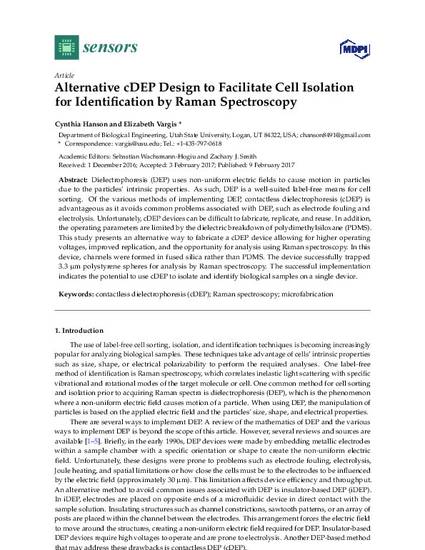
Dielectrophoresis (DEP) uses non-uniform electric fields to cause motion in particles due to the particles' intrinsic properties. As such, DEP is a well-suited label-free means for cell sorting. Of the various methods of implementing DEP, contactless dielectrophoresis (cDEP) is advantageous as it avoids common problems associated with DEP, such as electrode fouling and electrolysis. Unfortunately, cDEP devices can be difficult to fabricate, replicate, and reuse. In addition, the operating parameters are limited by the dielectric breakdown of polydimethylsiloxane (PDMS). This study presents an alternative way to fabricate a cDEP device allowing for higher operating voltages, improved replication, and the opportunity for analysis using Raman spectroscopy. In this device, channels were formed in fused silica rather than PDMS. The device successfully trapped 3.3 μm polystyrene spheres for analysis by Raman spectroscopy. The successful implementation indicates the potential to use cDEP to isolate and identify biological samples on a single device.
